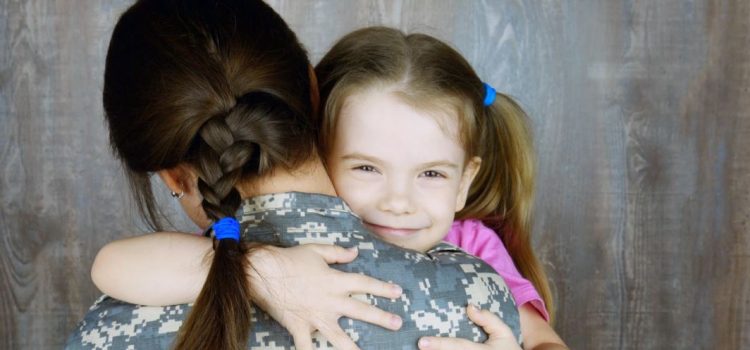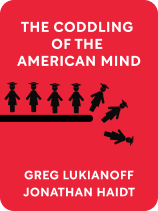

This article is an excerpt from the Shortform book guide to "The Coddling of the American Mind" by Greg Lukianoff and Jonathan Haidt. Shortform has the world's best summaries and analyses of books you should be reading.
Like this article? Sign up for a free trial here .
What is safetyism? How did media coverage lead to an increase in safety parenting? What long-term effects does safetyism have?
Jonathan Haidt and Greg Lukianoff, co-authors of The Coddling of the American Mind, think that safetyism and safety parenting is creating fragile children. This means that when those kids reach college, they are more likely to rely on authority figures to solve all of their problems instead of handling them themselves.
Keep reading to learn what Jonathan Haidt and Greg Lukianoff have to say about the impacts of safetyism.
The Side-Effects of Safetyism
More than anything, safetyism is a response. Faced with a cohort of perpetually scared and anxious students, it’s not surprising that university administrators respond by coddling these young people and protecting them from “harmful” speech and opinions.
Of course, the more oppressive manifestations of safetyism, like call-out culture, only increase these anxieties. Coddling students only reinforces their negative cognition, affirming them in their beliefs that the world is a dangerous and scary place that they must be shielded from.
As we know, this is precisely the opposite of how one overcomes irrational anxieties. The attitudes that parents, professors, and university administrators are taking toward students will only reinforce their sense of helplessness and teach them that every minor misunderstanding or transgression is the product of deliberate and vicious hostility.
Safety Parenting
Safety parenting is a major component of the broader phenomenon of safetyism. This style of parenting traces its origins back to the 1980s and 1990s.
That era saw the rise of 24-hour cable news. Much of the programming on these new news networks focused on high-profile abductions and murders of young children. Breathless news coverage of kidnappings and other similar tragedies convinced a nation and a rising generation of parents that there was an epidemic of child kidnappings at the hands of violent drifters and lurking sexual predators. This all took place within the broader context of a crime rate that began to climb in the 1960s and didn’t come down until the 1990s.
But the phenomenon of child abductions was always more media myth than reality. The overwhelming majority of child disappearances result in the safe return of the child to his or her parents. Moreover, nearly all of the kidnappings that do happen are at the hands of family members or other individuals known to the abductee—in the US, only about 100 children out of a population of 70 million are abducted by a stranger per year.
In reality, the world is far safer than the parents of iGen imagine it to be.
A Safer World, More Fragile Kids
As a result of their misplaced sense of fear and overhyping of perceived dangers, today’s parents limit the independent activities of their children to a far greater extent than previous generations of parents.
Parents also face pressure and judgment from other parents when they are believed to have placed their children in “danger.” In the most over-the-top cases, neighbors have called the police on parents for such things as being late to pick their kids up from school or leaving children in the car while they run a brief errand.
All Work and No Play
As a result of these social pressures and improper assessments of risk, today’s kids are far less likely to engage in even the most routine activities that entail some measure of independence, like walking alone to a friend’s house or going to a public restroom unattended.
There has been a sharp drop in unsupervised, unstructured play. This is actually a vital part of childhood development, as kids learn to deal with moderate levels of risk and fear from games involving hiding, exploring, or climbing trees. Such activities are also an important part of socialization, as kids learn to manage different personalities, resolve conflicts, and negotiate disputes.
Because they haven’t learned proper modes of conflict resolution, they are also more likely to rely on authority figures and mechanisms of external control to resolve disputes—hence the demands that university administrators “ban” disagreeable speech.
Loss of Independence
While these losses may seem trivial, they prevent children from learning how to realistically evaluate risks when they become adults.
The excessive concern for their safety also teaches children that the world is a dangerous place that they must be shielded from at all times. That they then carry this attitude to college and expect to be protected from “violent” and “dangerous” speech and opinions becomes less surprising when we consider how they were parented.
As we discussed in Chapter 1, kids are antifragile—they benefit from exposure to mild risks and setbacks. No one would argue that kids should be put into mortal danger or be exposed to severe psychological trauma, but overcoming some measure of adversity gives young people the confidence that enables them to thrive later in life.
Privileged Parenting
The rise in safety parenting has been far more notable within privileged families. These are typically households with two married, working parents, who earn an income that places them on the higher end of the socioeconomic ladder.
Such parents are far more likely to closely regulate their children’s activities both inside and outside of school. Rather than allowing children to engage in unstructured activities with peers, these parents fill their kids’ schedules with “stimulative” activities like music and language lessons—often in the hope that these will ultimately help them secure admission to elite universities.
This represents a sharp contrast to the parenting norms within working-class families. These families are more likely to feature a single parent or a sole breadwinner and reside on the lower end of the socioeconomic ladder. Children of these less-privileged backgrounds tend to be given a greater degree of independence and unsupervised play.
These different class-based approaches to parenting also help to explain the fragility of today’s college students, largely because it is precisely these same privileged kids who are far likelier to be at college in the first place (especially the elite institutions where so many episodes of campus unrest have unfolded). Because they’ve been raised in a world that places their emotional safety above all else, it’s no wonder that they come to see the learning process solely through the lens of safety rather than knowledge.
The College Admissions Game
The attitudes and expectations of privileged parents have also profoundly reshaped the educational system. As colleges and universities have become more exclusive and expensive, the competition for admission (particularly at elite institutions) has taken on a cutthroat character.
Even in kindergarten, which was once almost entirely oriented around free play and socialization, teachers now drill math and reading content into five-year-olds. Outside of school, privileged kids fill more and more of their free time with lessons and extracurricular activities, standardized test prep courses, scheduled playdates, and tutoring sessions.
Children come to feel that one poor performance on a test will sink their chances of admission to a good college—and thereby condemn them to a life of failure. This likely plays a role in the mental health crisis among young people that we saw in the last chapter, with suicide clusters occurring at elite high schools around the country.

———End of Preview———
Like what you just read? Read the rest of the world's best book summary and analysis of Greg Lukianoff and Jonathan Haidt's "The Coddling of the American Mind" at Shortform .
Here's what you'll find in our full The Coddling of the American Mind summary :
- The "three Untruths" that have taken hold of young people
- The damage that "speech codes" cause on college campuses
- How colleges are increasingly seeing students as customers






